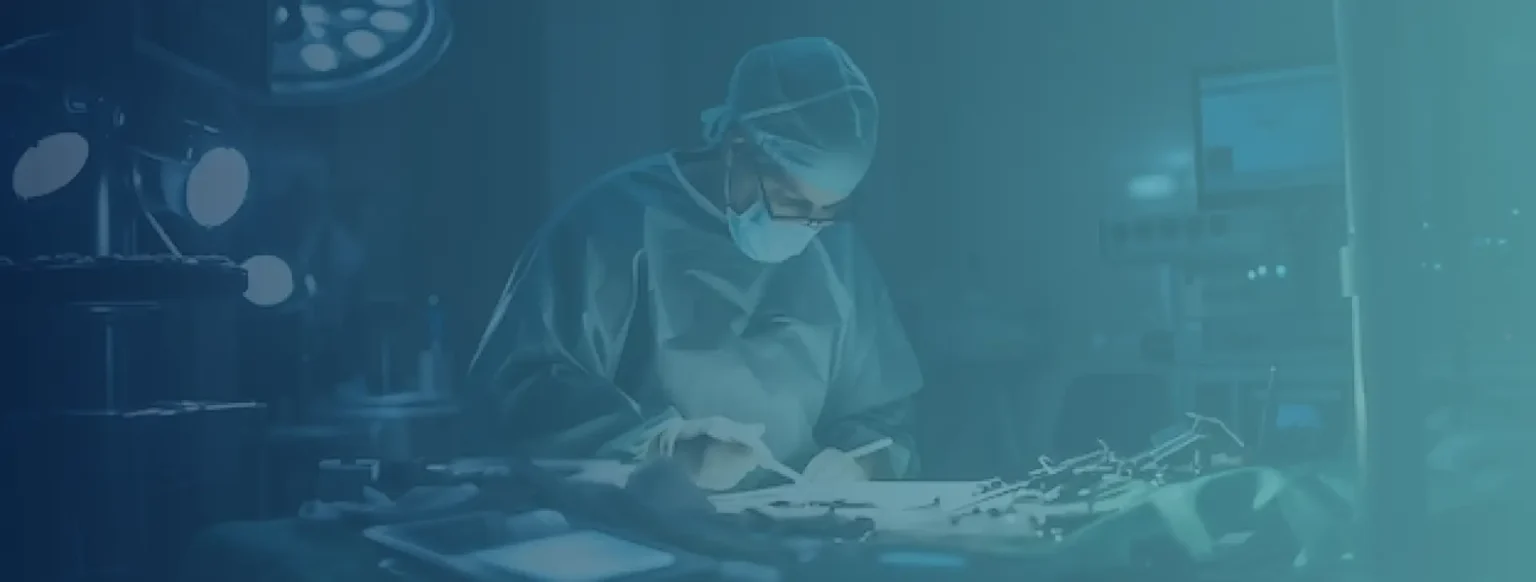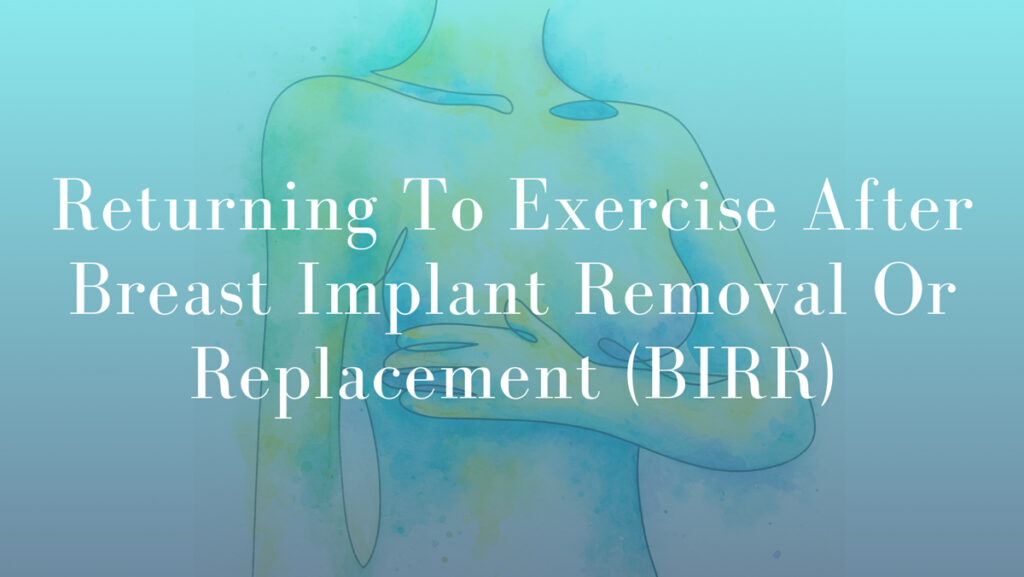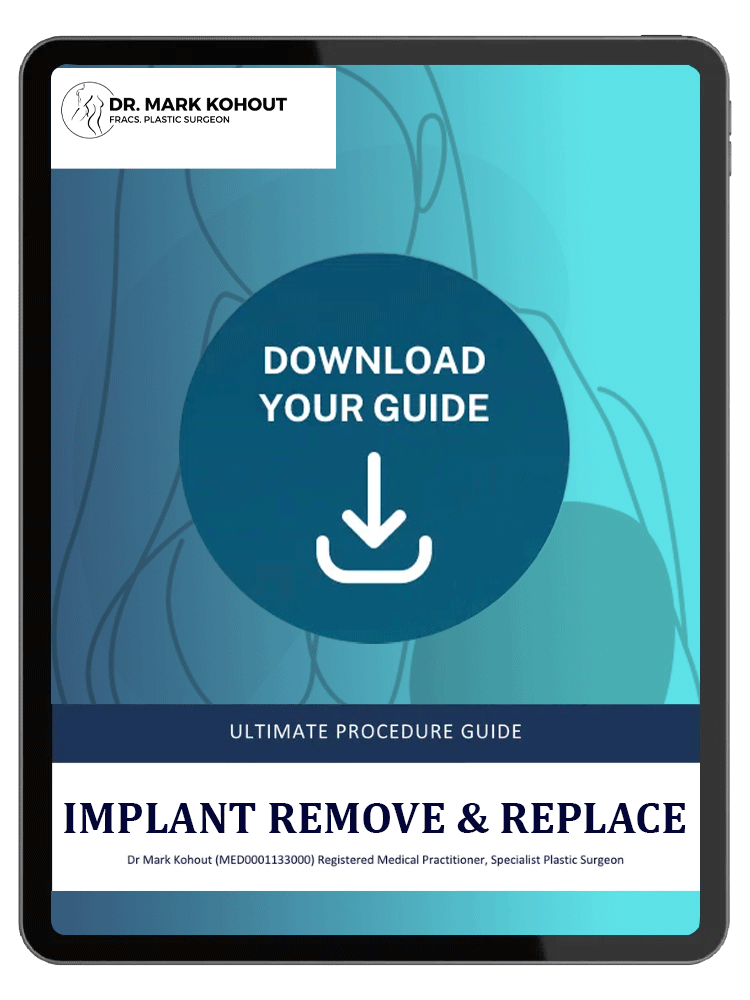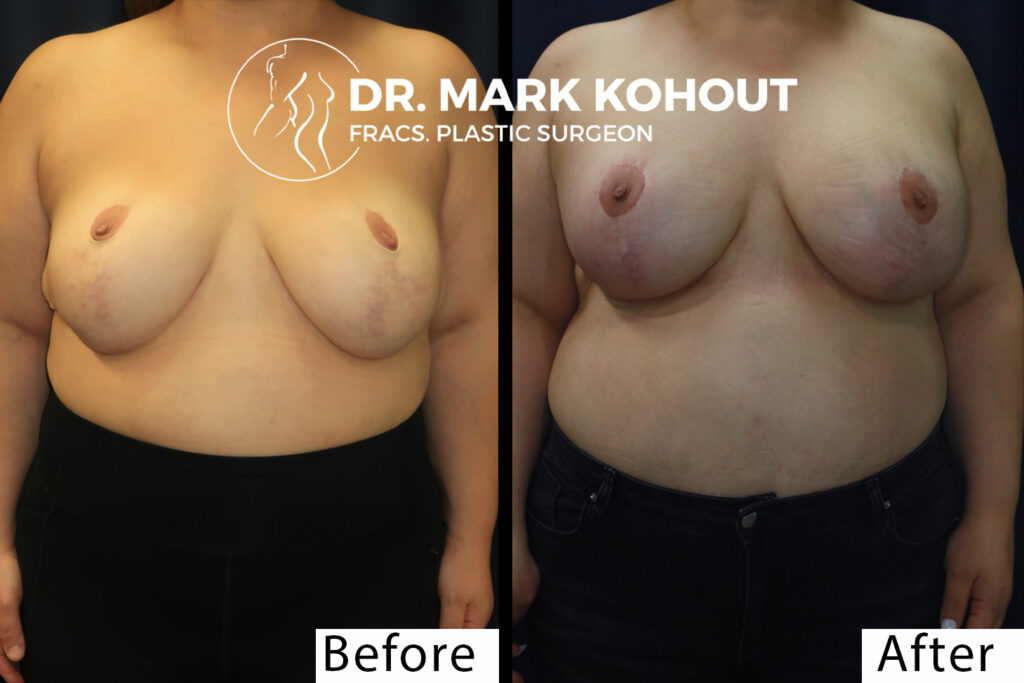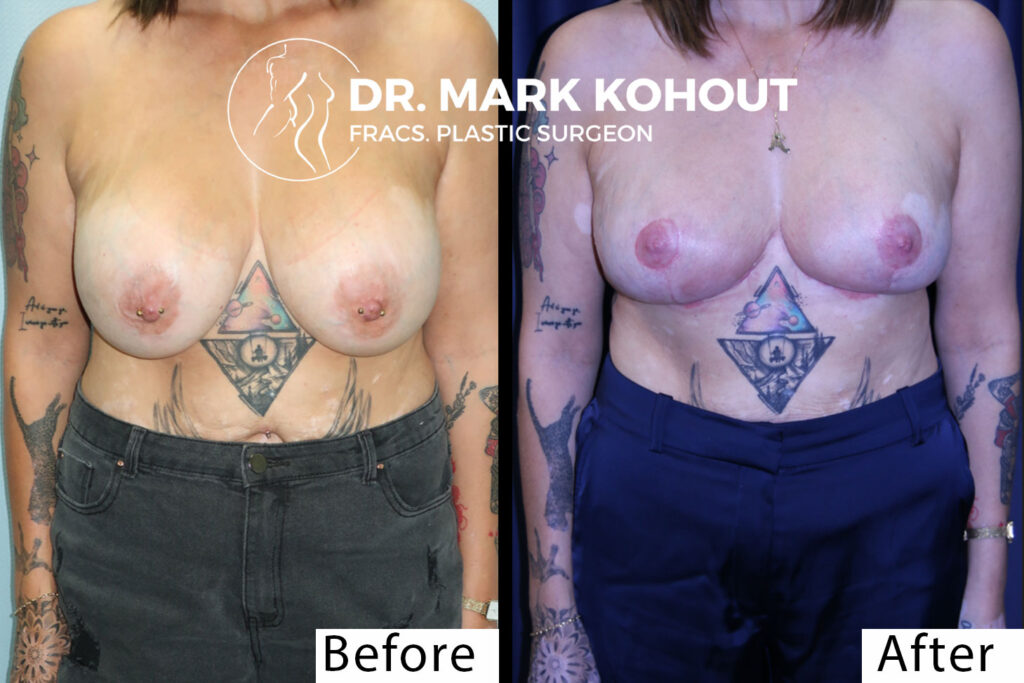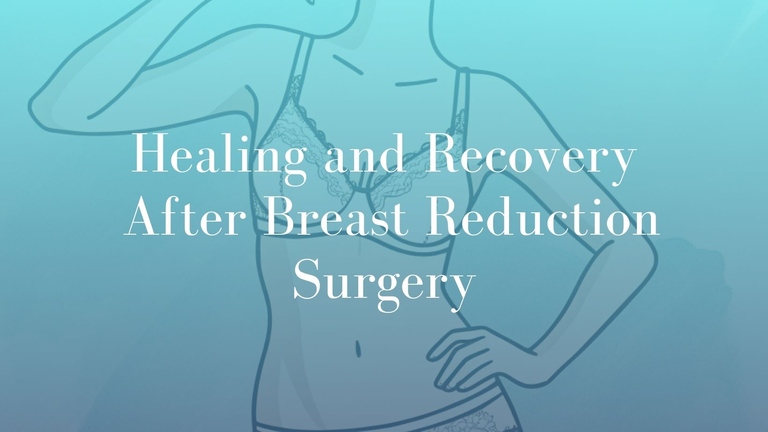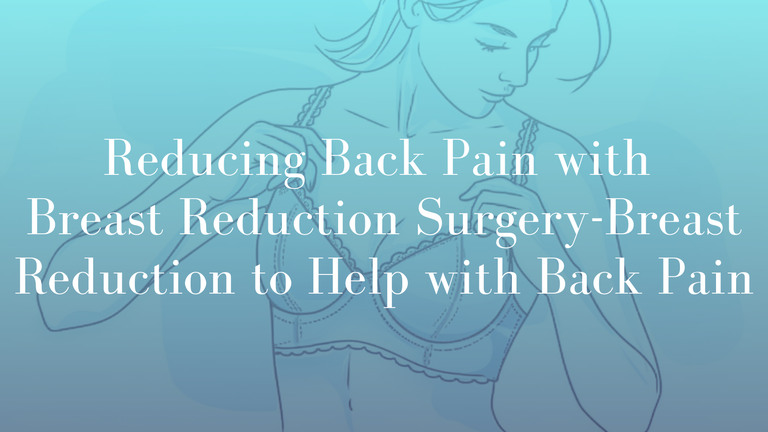
Following any surgical procedure, patients often ask: “When can I exercise again?“ This question is especially common after Breast Implant Removal Or Replacement (BIRR). As a Specialist Plastic Surgeon based in Sydney, Dr Mark Kohout guides patients through every stage of the recovery journey, including the safe reintroduction of physical activity.
Physical recovery after BIRR is not just about waiting – it’s about understanding your body’s healing phases and knowing when and how to safely reintegrate movement. Exercise can play a positive role in the recovery process, but only if it is done strategically, with the right timing and under appropriate medical guidance.
This article outlines a medically informed, staged approach to returning to exercise after BIRR. Each recommendation reflects Dr Kohout’s patient-centric surgical care philosophy and adheres to current post-operative standards. It is designed to help patients regain function safely, maintain their physical and mental wellbeing, and minimise complications.
Understanding BIRR - What Is Involved?
What Is BIRR?
BIRR stands for Breast Implant Remove/Replace, a procedure that either removes existing implants or removes and replaces them, depending on patient goals and clinical considerations. The motivations for this procedure are diverse. Some individuals seek removal due to discomfort, personal preference, or complications like capsular contracture. Others opt to replace their implants with newer types, a different size, or to address changes in their body or lifestyle.
For some patients, breast implant illness (BII) symptoms may lead to the decision to remove implants entirely, even when no medical complications are evident. In all cases, it’s essential that patients consult with a qualified Plastic Surgeon, such as Dr Mark Kohout in Sydney, to explore all clinical and aesthetic factors involved.
What Happens During Surgery?
During a BIRR procedure, incisions are typically made along previous scar lines where possible to minimise new scarring.The surgical steps depend on whether the patient is undergoing removal alone or removal and replacement. The implant may be extracted intact, or in cases involving capsular contracture or BII, the surrounding capsule is also removed in a capsulectomy.
When replacing implants, Dr Kohout may adjust the implant pocket or perform additional reshaping to achieve the desired outcome. This could involve repositioning tissues, adjusting symmetry, or even lifting the breast tissue in the same operation. His planning is comprehensive, focusing not just on the surgical moment but on the post-operative healing environment and long-term comfort and aesthetics.
Why Exercise Matters After Surgery
Physical Benefits Of Returning To Movement
Exercise, when timed and executed appropriately, supports the recovery process in measurable ways. The circulatory benefits of movement help deliver nutrients and oxygen to healing tissues. Gentle movement also stimulates lymphatic drainage, helping the body to reduce swelling more efficiently and flush out any residual anaesthetic or inflammatory byproducts.
For many individuals, physical activity also helps restore a sense of autonomy and connection with their bodies, particularly after a surgery that alters physical structure or appearance. Gentle, progressive activity can help patients reclaim daily routines and maintain their sense of wellbeing without interfering with surgical outcomes.
Risks Of Resuming Exercise Too Early
It’s important to remember that healing tissues are vulnerable in the early post-operative period. Exercise that places strain on the chest, shoulders, or upper arms can disrupt internal sutures, destabilise implants, or aggravate swelling. The risk of internal bleeding or seroma formation is elevated if physical exertion is reintroduced too soon. These setbacks can prolong recovery and may, in some cases, require additional interventions.
Surgeons like Dr Mark Kohout provide specific timelines to help patients avoid these outcomes. Listening to professional guidance is not just about avoiding pain – it’s about protecting the integrity of the surgical site and achieving optimal long-term results.
The Role Of Dr Mark Kohout In Post-Surgical Guidance
With decades of surgical experience, Dr Mark Kohout provides comprehensive recovery plans to each patient. These include tailored guidelines for pacing physical activity, recognising signs of overexertion, and scheduling movement based on how healing is progressing.
Patients under his care in Sydney receive ongoing support not just through follow-up visits but also through education and access to resources. Dr Kohout’s priority is ensuring each patient recovers safely and returns to movement with confidence and clarity.
Week 1 - Rest And Limited Movement
In the first week after BIRR, rest is critical. This is a time of active internal healing, and the body needs energy directed toward recovery, not exertion. It is common to experience fatigue, swelling, and tightness in the chest area. Most patients are advised to stay at home, avoid physical stress, and allow incisions to settle.
Light walking around the home is encouraged to promote circulation and prevent stiffness, but anything beyond that is generally not advised. Patients should avoid lifting, stretching, or reaching overhead. Maintaining hydration and good nutrition is equally important during this phase to support tissue repair. Adequate sleep, gentle breathing exercises, and a calm environment all play a part in creating an optimal healing space.
Weeks 2–3 - Introducing Light Activity
By the second week, patients often feel slightly more mobile and may be eager to resume aspects of daily life. However, caution is still necessary. While longer walks may be introduced, activities should still be low intensity. It is appropriate to increase gentle movements that do not engage the upper body or disrupt healing incisions.
This phase is about regaining a sense of physical autonomy without compromising results. During follow-up visits, Dr Mark Kohout will evaluate wound healing, implant position (if applicable), and soft tissue integrity. He will advise when it is appropriate to extend activity, always ensuring safety remains the top priority.
Weeks 4–5 - Reintroduction Of Low-Impact Exercise
At this stage, many patients begin to feel stronger and are often keen to increase physical activity. Low-impact exercises that do not place pressure on the chest may be allowed, depending on how the body has responded to surgery. Walking at a brisker pace, gentle cycling, and basic leg and core engagement can be helpful to restore overall conditioning.
Patients should still avoid any exercises that engage the pectoral muscles or risk strain to the upper torso. Stretching and range-of-motion activities may be introduced under guidance, particularly to restore mobility in the shoulders and upper back, areas often affected by changes in posture during recovery.
Week 6 And Beyond - Controlled Strength Training
Once cleared by Dr Kohout, patients may begin a return to more structured and controlled strength training. The approach here must still be gradual, prioritising proper form and sensitivity to the body’s responses. While lower-body strength training often resumes first, upper-body exercises must be reintroduced with great care.
Activities like swimming, Pilates, and yoga may resume with specific modifications to avoid overstretching or compressing the chest area. The use of light weights, elastic bands, and supported movements can all contribute to rebuilding strength without compromising the surgical site. It is critical to listen to one’s body, slow down when needed, and maintain open communication with the surgical team to address any concerns.
Breast Revision Before and After Images
Factors That Influence Your Return To Exercise
Recovery timelines can vary significantly depending on the type of surgery, the specific techniques used, and each individual’s healing capacity. Patients who underwent implant removal only may find they can resume activities a little sooner than those who had both removal and replacement. This is because replacement involves more manipulation of tissue and, often, the placement of new implants under the muscle.
The incision type and implant location also play important roles. For example, submuscular implants generally require a longer period of recovery before upper body exercises are safe to perform. Dr Kohout takes all of these variables into account when advising his patients, making each post-operative plan unique and adapted to individual needs.
The Role Of Support Garments During Recovery
Wearing post-surgical support garments is essential throughout the healing journey. These garments help reduce swelling, maintain the position of implants (if placed), and minimise tension on healing incisions. Patients are usually advised to wear a compression bra or surgical garment continuously for the first few weeks, gradually reducing usage as healing progresses.
Support garments can also improve overall comfort, especially during early movement. As activity levels increase, patients should choose supportive sports bras without underwire, ensuring proper fit and breathability. Dr Kohout discusses the appropriate type and duration of support wear during follow-up consultations.
FAQs About Returning To Exercise After BIRR
How might the type of implant removal affect when I can resume different forms of movement?
Whether the procedure involves a simple explant or a full capsulectomy can influence tissue trauma and therefore determine how soon various types of exercise can safely resume. Dr Kohout discusses this in detail with each patient post-operatively.
Can my posture or gait change temporarily after implant removal?
Yes, some patients report feeling changes in posture, balance, or upper body alignment in the first few weeks following implant removal. These usually improve with time and targeted movement strategies.
Will the way I exercised before surgery affect how I return to it after?
Yes. Patients who were regularly active prior to surgery often regain function and return to modified exercise routines more comfortably, though the pace of return is still guided by surgical healing.
Are there exercises I should permanently avoid after BIRR?
Most patients return to full activity, including resistance training, once cleared. However, in some cases, modifications may be advised long-term, particularly for upper body exercises that create high intra-thoracic pressure.
Could scar tissue affect how I move or train after surgery?
Scar tissue can occasionally affect range of motion or flexibility, particularly in the chest or shoulder region. Dr Kohout may recommend techniques such as targeted stretching or soft tissue massage to assist.
How do I know if my body is responding well to increased movement post-surgery?
Progress should be gradual and comfortable. Signs of successful adaptation include stable energy levels, absence of swelling after activity, and improved mobility. Any sharp discomfort or new tightness warrants review.
Is walking sufficient for maintaining fitness in the early recovery phase?
Yes, walking is often the safest and most effective early activity. It supports cardiovascular function, circulation, and mental wellbeing, and is an important first step in regaining physical routine.
Medical References
- Recognizing and Managing Breast Implant Complications: A Review – https://pmc.ncbi.nlm.nih.gov/articles/PMC12067747/
- Practical Method for the Removal of Silicone Breast Implants – https://pmc.ncbi.nlm.nih.gov/articles/PMC11995983/
- Evaluation of Major Complications Following Ruptured Implant Removal – https://academic.oup.com/asj/advance-article/doi/10.1093/asj/sjaf068/8219134
- What Can We Learn from Breast Implant Explantation: a 28-Year Retrospective Study – https://pmc.ncbi.nlm.nih.gov/articles/PMC10196311/
- Breast Implant Removal – Medical Clinical Policy Bulletins (Aetna) – https://www.aetna.com/cpb/medical/data/100_199/0142.html
- Breast Implant Illness: Treatment Using Total Capsulectomy and Implant Removal – https://pmc.ncbi.nlm.nih.gov/articles/PMC9097901/
- Risks and Complications of Breast Implants – FDA https://www.fda.gov/medical-devices/breast-implants/risks-and-complications-breast-implants
Ready To Take The Next Step?
If you are considering breast implant removal or replacement and want to understand what your recovery and return to exercise could look like, scheduling a consultation with Dr Mark Kohout in Sydney is a valuable first step. With extensive experience in plastic surgery and a personalised, evidence-based approach to care, Dr Kohout can provide you with tailored advice and a surgical plan that aligns with your goals.
Whether you’re early in your research or ready to move forward, Dr Kohout and his team are available to guide you through your options with professionalism, clarity, and support. Visit the clinic website or contact the practice today to arrange your private consultation.
Further Reading
- Read more about Breast Implants Sydney
- Read mroe aboiut Breast Lift Sydney – Mastopexy
- Read Dr Mark Kohout’s Blog on Recovery after Breast Implant Removal?
- Read Dr Mark Kohout’s Blog on Recovery After Breast Implant Removal: What to Expect and How to Navigate the Process
- Read Dr Mark Kohout’s Blog on FAQs about Breast Implant Removal
Related Blog Posts
Healing and Recovery After Breast Reduction…
Comprehensive Guide to Healing and Recovery After Breast Reduction Surgery Download Dr Mark Kohout’s Breast Reduction Surgery Guide Healing and Recovery After Breast Reduction: Timeline and Tips Breast reduction surgery,…
Breast Reduction Medicare Cover – Will…
Will Medicare Cover My Breast Reduction? Breast reduction, medically known as reduction mammoplasty, is a surgical procedure that removes excess breast tissue and skin to achieve a breast size more…
Reducing Back Pain with Breast Reduction…
The Connection between Back Pain and Overly Large Breasts For some women, overly large breasts can be a source of discomfort and pain, particularly in the back region. The weight of…
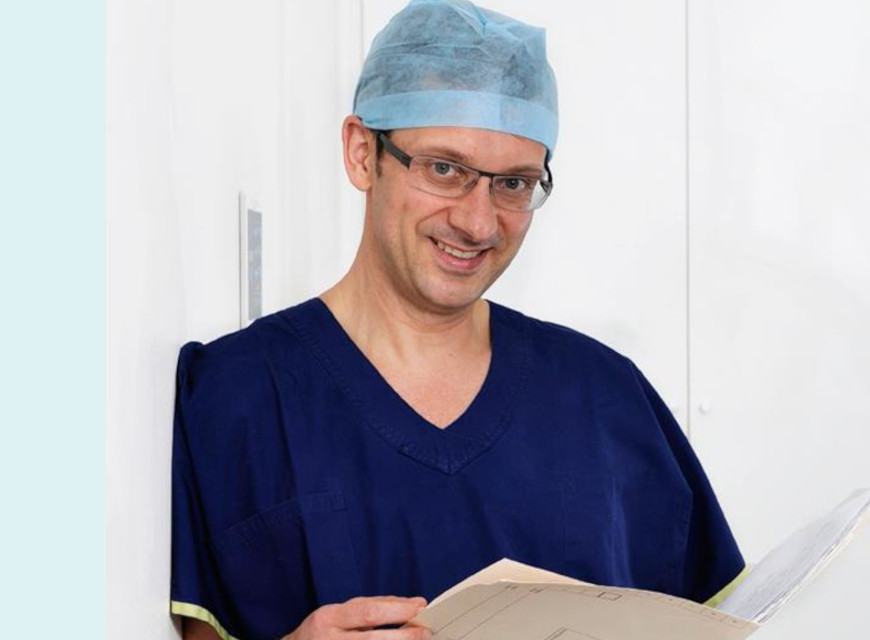
Experienced Plastic Surgeon
Dr. Mark Kohout
A qualified plastic surgeon who operates with care and integrity, based in central Sydney with over 20 years of experience in the cosmetic field. His extensive training and experience assures patients they are in highly trained surgical hands. Dr. Kohout is a dedicated, friendly professional who is committed to providing the high quality care, support and results, alongside his compassionate team.
Dr Mark Kohout (MED0001133000)
Specialist Plastic Surgeon
Specialist registration in Surgery – Plastic Surgery

